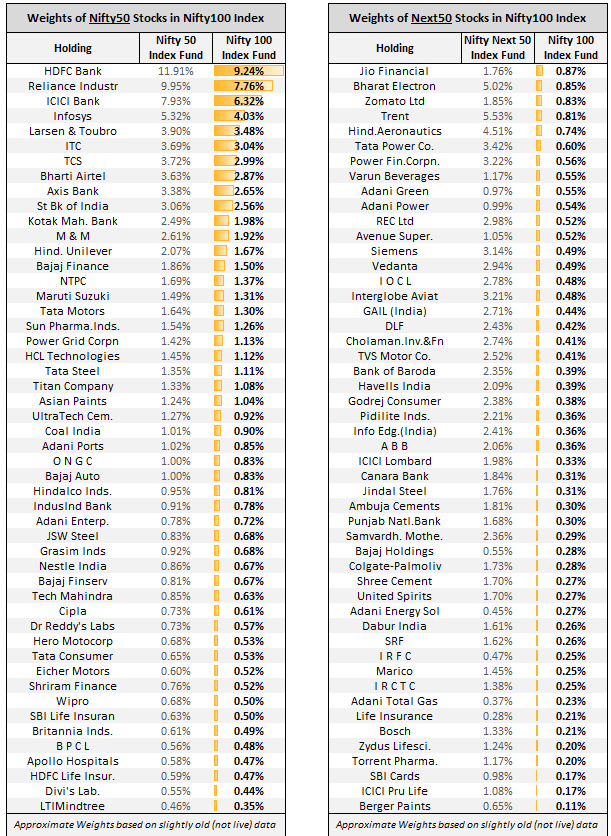Many people think that the Nifty 100 index is simply the combination of the Nifty 50 and Nifty Next 50 indices. However, this is not exactly true. While it is true that the Nifty 100 is made up of the first 50 stocks in the Nifty 50 and the next 50 stocks in the Nifty Next 50, the way these stocks are weighted is quite different.

Weight Allocation in Nifty 100
One might assume that the returns from the Nifty 50 and Nifty Next 50 would combine to give the returns of the Nifty 100. But the weight allocation in the Nifty 100 is very skewed. For example, in the Nifty 100, stocks like HDFC Bank, Reliance Industries, and ICICI Bank have very high allocations. HDFC Bank alone has a 9.2% allocation, Reliance Industries has 7.7%, and ICICI Bank has 6.3%. This means that almost 80% of the Nifty 100’s weightage is from the Nifty 50 stocks.

Skewed Weighting Towards Nifty 50
This skewed weighting means that the Nifty 100’s performance closely mirrors that of the Nifty 50. The Nifty Next 50, which has performed very well in recent years, only has a 20% allocation in the Nifty 100. This is an important point for investors to understand. If you are investing in a Nifty 100 based mutual fund or ETF, you are essentially getting a product that behaves much like the Nifty 50, with very little exposure to the Nifty Next 50.
Importance of Understanding Index Composition
When investing in ETFs or index funds, it is crucial to understand the composition of the index. Many investors might buy into a Nifty 100 based fund thinking they are getting a balanced exposure to both Nifty 50 and Nifty Next 50. However, due to the skewed weightage, this is not the case. The Nifty 100 is heavily tilted towards the Nifty 50 stocks.

Disclaimers and disclosures : https://tinyurl.com/2763eyaz
If you have any questions, please write to support@weekendinvesting.com












